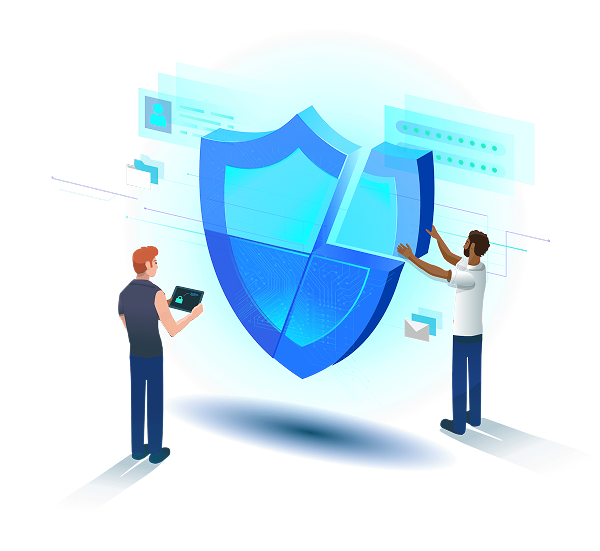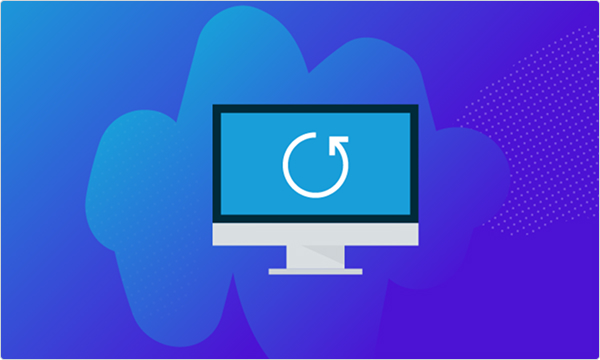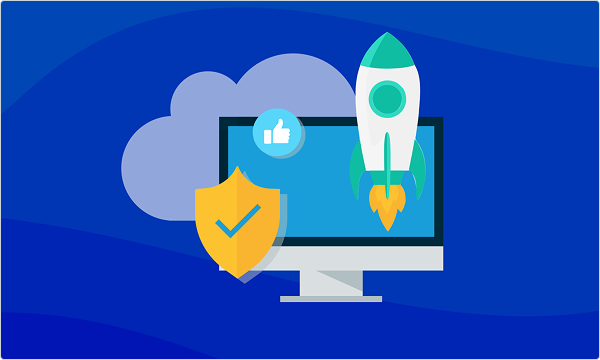Business continuity without compromise
Backups are just the first step. Business continuity and disaster recovery go further, helping you reduce downtime, protect revenue and build resilience.
Datto is here to support you with rapid recovery, automated testing and resilience built to combat business downtime.

Downtime is the #1 enemy of successful businesses.
You may think, “We’ve got backups, so we’re covered.” Unfortunately, that’s one of the biggest myths in the IT industry.
Backups alone do not guarantee uptime, rapid recovery or business resilience. What matters is the ability to keep your business running no matter what happens, whether it’s ransomware, a power outage or a natural disaster.
How ready is your business?
Regardless of the size of your business, it’s essential to understand your level of readiness in the event of downtime. The difference between each stage can determine whether you survive an outage with minimal impact — or face complete business disruption. Discover top tips from other IT professionals on how to effectively sell BCDR solutions.
Foundational backups
“We have backups.”
Backups alone are not enough. Businesses at this level remain highly vulnerable, as recovery is slow, incomplete and often untested — leaving them at serious risk of downtime that can cripple operations and destroy customer trust.

What is BCDR?
Business continuity and disaster recovery is a set of practices that brings together people, technology and processes to help an organization continue or recover business operations.
Read the blogBackup vs. business continuity
Backups are like having a spare tire. Useful, but not much help if you don’t know how to change it in the rain at night. Business continuity ensures you have the tools, knowledge and plan to get moving again quickly.
Learn how3–2–1 backup rule
The 3-2-1 backup rule states that you should have 3 copies of your data, 2 different backup formats and 1 backup stored off-site. This rule is a good foundation, but more advanced plans exist.
Discover moreWhy backup isn’t enough
Having backups is a good start, but it doesn’t mitigate downtime. Some cyberattacks even directly target backups for maximum damage. Knowing your RTO & RPO is essential for all businesses.
Discover whyStrategic backup and recovery
“We measure RPO/RTO and test recovery.”
Organizations recognize downtime has measurable costs — but not always the full impact on the business. By setting RPOs (recovery point objectives) and RTOs (recovery time objectives) and regularly testing recovery, they ensure their recovery plans align with business needs and demands.

Putting RTO & RPO into practice
Every business has a different tolerance for downtime and data loss. Knowing your limit and how to reduce the time to recover is essential. Discover our top tips to reduce your RTO.
Learn moreHow to mitigate downtime
Reducing your downtime risk can be easier than you think. BCDR solutions can help reduce failover and recovery times in a disaster. We’ve collected top tips on what to look for in a reliable solution.
Read the BCDR buyer’s guideTesting & validation
Backups must be tested regularly. The most advanced BCDR tools use automated boot verification and sandbox tests so you know recovery will work when you need it to. Take a look at Datto’s Advanced Verification .
Read nowCompliance drivers
From HIPAA to GDPR, regulations increasingly require proof that you can recover systems and data quickly. Non-compliance carries fines, lawsuits and reputational damage.
Case Study
“Data backup is absolutely necessary – everybody has something that needs to be backed up.”
Linda Kuppersmith, CMIT Solutions Stamford & Hartford
Try the downtime cost calculatorScalable business continuity
“We automate recovery across hybrid and multi-cloud environments.”
Growing businesses embrace automation to orchestrate recovery across hybrid and multi-cloud environments. Consistency, speed and reduced human error become key to protecting complex, distributed infrastructures.

Building a business continuity plan
Knowing how to recover is one thing but ensuring the entire business knows how to respond is a bigger challenge. A continuity plan is designed to map out the plan in case of an outage.
Learn how to write a BCPAutomation & orchestration
Once you have a continuity plan, you can take extra steps to cut human error and speed up failover. If you support complex hybrid and multi-cloud environments, this can be essential for responding at scale.
Learn moreCross platform coverage
Ensuring your data is protected no matter where it lives is key to making your business resilient. Whether it’s in the cloud, on-site, off-site or in SaaS applications, it’s important to protect it. Datto helps support multi source data backups easily within one platform.
Learn more3-2-1-1-0 backup rule
Go beyond 3-2-1 backup and look at a true disaster recovery strategy. The robust 3-2-1-1-0 backup rule helps ensure you have resilient backups to help recover data quickly.
Learn moreAdvanced business continuity
“Continuity is built into our business strategy.”
Organizations ensure that continuity evolves into a business priority, deeply integrated into overall business and IT strategies. Risk management, compliance and resilience are embedded into decision-making to ensure operations never stop.

DR testing
Running a true disaster recovery test can be intimidating, but it’s essential. Just like a fire drill, being able to test your recovery plan and eliminate fear and panic can be a lifesaver when disaster strikes.
Learn how to run a successful DR TestReady for audits?
As an IT professional, you might be subject to compliance audits. Even if you’re not, in a regulated industry, some insurance policies require documented continuity plans to ensure valid claims.
Discover how Datto can helpTesting threats
Are you prepared for everything? Are there threats you haven’t considered? We’ve put together a guide on risks you might face and how to mitigate them.
Learn moreBasic prevention
Prevention is the best cure. Discover the essentials of building a multilayered protection plan. While BCDR is the ultimate last line of defense, discover how to reduce risk in the first place.
Learn howCase Study
We get a lot of snow in North Dakota and Minnesota, and the snow load for a roof was too much, and the roof collapsed and landed on the entire data center. We were able to stand that company up out of the remote data centers at Datto and have them back online in less than two hours.
Kelvin Daniels - Xtona
Multi-layered business resilience
"We have multi-layered protection and continuity."
Business resilience becomes a competitive advantage. Multi-layered defenses, proactive monitoring and adaptive recovery ensure operations continue seamlessly even in the face of cyberattacks, disasters or large-scale outages.

Access to cyber experts and prevention
Protect, detect and respond to sophisticated cyber threats without needing internal expertise. Often, threats become apparent only when it's too late. Having a managed SOC, conducting simulated cyberattacks and maintaining immutable backups are crucial measures for ensuring business resilience.
Learn moreTop to bottom operational resilience
Ensure you have comprehensive coverage of essential business systems like finance, HR and customer support. Develop communication strategies for staff and customers and involve executives and boards in resilience planning.
Learn moreEnhanced SLA efficiency with integrations
One of the keys to successfully mitigating downtime and ensuring quick recovery is clear communication — both between people and across systems. Having an integrated tech stack that includes RMM, PSA, documentation and your security tools can save critical time.
Learn moreSupporting highly regulated industries
As you deploy multi-layered protection and maintain audit-ready documentation, you open the door to new business opportunities. Supporting clients that operate under specialized regulations can expand your revenue streams and give your business a competitive advantage.
Learn moreCase Study
We get a lot of snow in North Dakota and Minnesota, and the snow load for a roof was too much, and the roof collapsed and landed on the entire data center. We were able to stand that company up out of the remote data centers at Datto and have them back online in less than two hours.
Kelvin Daniels - Xtona
Ready to move up a level?
Key backup strategy concepts
- RPO (Recovery point objective): How much data you can afford to lose.
- RTO (Recovery time objective): How quickly you need to get back online.
- Immutable backups: Protect against ransomware by making backups unchangeable.
- Failover: Instantly switch to a standby system to minimize downtime.

Common objections and how to respond
When delivering BCDR or disaster recovery services, end users may raise certain objections. We’ve compiled a list of typical concerns and responses that can assist you in supporting, educating, and safeguarding your users effectively.
Mindset:
“We’re already backing up our data, so we’re covered. We don’t need anything more complicated or expensive."
My response:
“Backups are only the first step. They help you recover data, but not your business operations. What happens if your server fails or gets hit with ransomware? With BCDR, we can spin up your entire system instantly — not just recover files.”
Why it matters:
This lets me position BCDR as an uptime and continuity tool, not just a storage solution.
Client mindset:
"They’re a small business — we can’t justify another cost right now."
My response:
“I get it — but downtime can cost thousands per hour. One ransomware attack, one hardware failure, and you're looking at days of lost revenue, staff productivity, and customer trust. BCDR pays for itself by avoiding that risk.”
Why it matters:
This helps shift the conversation from cost to value and risk avoidance.
Client mindset:
"We store everything in Microsoft 365 or Google — isn’t that automatically safe?"
My response:
“Cloud services protect their infrastructure — not your data. If someone accidentally deletes a file, or a rogue script wipes your system, Microsoft won’t help you restore it past a certain point. BCDR gives you control, not hope.”
Why it matters:
Cloud reliance creates a false sense of security. I use this to clarify who's responsible for what.
Client mindset:
"We're not a bank or hospital. We're just a small business. Who would target us or care if we went down?"
My response:
“That’s exactly why you need it. Small businesses are the top targets for ransomware because they’re easier to hit — and 60% of SMBs that suffer a major data loss never recover. BCDR gives you big-business protection at a small-business scale.”
Why it matters:
I need to show that business size doesn’t equal immunity — in fact, it's often a liability.
Client mindset:
"This sounds like overkill. We’ve been fine for years. If something happens, we’ll figure it out."
My response:
“That’s like saying you’ve never had a fire, so you don’t need insurance. The moment something does happen — ransomware, system crash, flood — you’ll wish you were prepared. BCDR is peace of mind, not just IT over-prepping.”
Why it matters:
This one’s about future-proofing — helping them see that prevention is cheaper than reaction.
Client mindset:
"We’ve restored files before — it wasn’t a big deal. I don’t see why we need more than that."
My response:
“Restoring a single file is one thing. Restoring your entire system? That can take hours — or days — if your server or cloud platform is down. With BCDR, we can get you up and running almost instantly. That’s the difference.”
Why it matters:
They’re thinking in terms of small recoveries, not operational continuity. I need to widen their scope.
Client mindset:
"It sounds like a lot of work and disruption. We just need things to work — not to constantly test them."
My response:
“I completely get that — and that’s why we manage the testing for you. No disruption, just regular proof that your business can bounce back fast if anything happens. Wouldn’t you rather know it works than hope it does?”
Why it matters:
This reframes testing as done-for-you assurance, not an extra burden.
Client mindset:
"A few hours of downtime isn’t the end of the world for us. We’re not that time-sensitive."
My response:
“Let’s walk through that. If your team is offline for six hours, what’s the cost in lost productivity, customer support delays, missed orders, or reputation hits? Most downtime costs add up faster than people think.”
Why it matters:
They often underestimate the true cost of downtime — I use this to make it real.
Selling BCDR: Top Tips
- Lead with business outcomes (revenue, compliance, customer trust).
- Quantify risk with downtime calculators.
- Offer tiered protection packages (good / better / best).
- Share case studies and social proof.
- Highlight automation and “hands-off” management.
- Offer a risk-free pilot.
- Educate continuously via webinars, guides, and assessments.
- Show integration with existing RMM/PSA stacks.